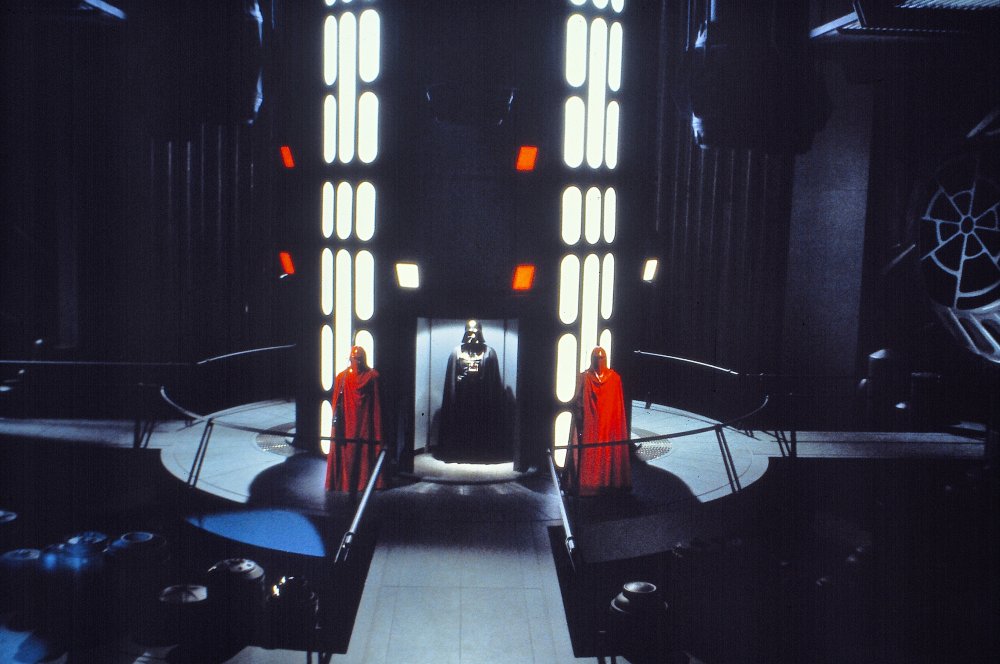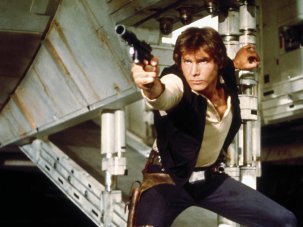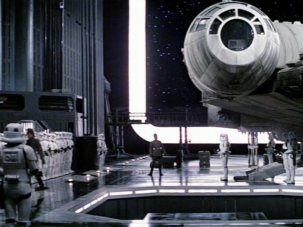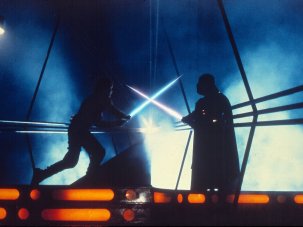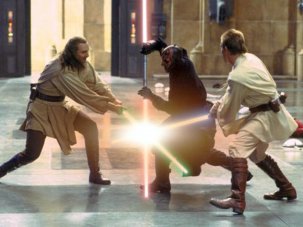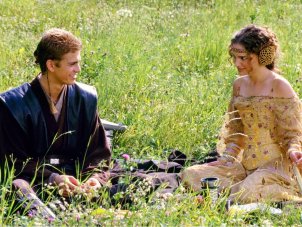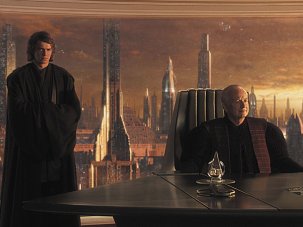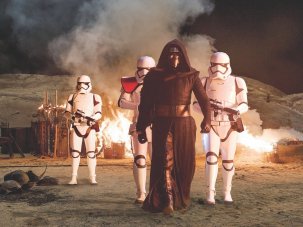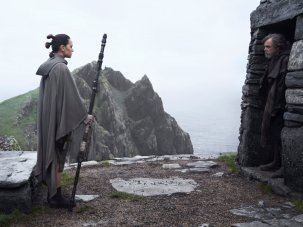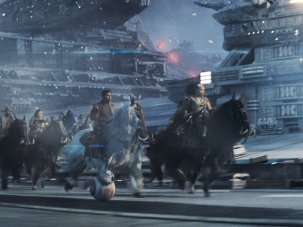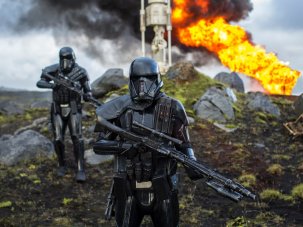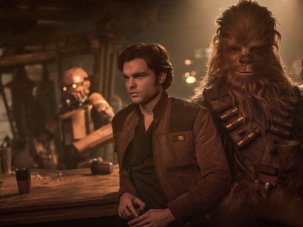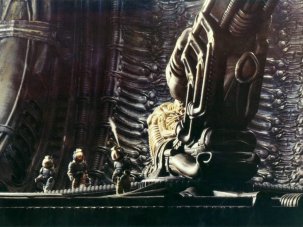“I can’t think of anything that we know how to do,” said a vice-president of Lucasfilm, quoted in an issue of Time with the face of the boy wonder himself on the cover, “that we didn’t do for this movie.” And the first comment to be made about Return of the Jedi is that while it’s very much the mixture as before, the ingredients are in peak condition.
USA 1983
Certificate U 131m 33s
Director Richard Marquand
Cast
Luke Skywalker Mark Hamill
Han Solo Harrison Ford
Princess Leia Carrie Fisher
Lando Calrissian Billy Dee Williams
C-3P0 Anthony Daniels
Chewbacca Peter Mayhew
Anakin Skywalker Sebastian Shaw
Emperor Palpatine Ian McDiarmid
Yoda Frank Oz
Darth Vader David Prowse
Voice of Darth Vader James Earl Jones
Ben Obi-Wan Kenobi Alec Guinness
R2-D2 Kenny Baker
Original UK release date 2 June 1983
Distributor Twentieth Century Fox (now Disney)
starwars.com/films/star-wars-episode-vi-return-of-the-jedi
► Trailers
For the hard to please, there’s just the occasional hint, perhaps, of urgency in the special effects (the deflector-shield transmitter, for example, could have used a touch more definition). But if Star Wars with a reported 545 effects was spectacular, Jedi on a trebled budget and 942 effects is dazzling. The enhancements go beyond the extraordinary technology developed by Industrial Light and Magic from the profits of the past seven years; the familiar components of the Lucas galaxy have been given casually fresh detail, from the new dart-like space shuttles with their equilateral wings right down to the magnificent red robes of the Imperial guard which serve to offset the raven shine of Darth Vader’s dread armour.
The little sand buggies that hovered intriguingly just above the Star Wars dunes have now grown to elegant floating barges (superbly designed by Ralph McQuarrie) held aloft by some far finer sorcery than a girdle of mirrors. And in response to the appetite for aliens whetted by the first film, oddities are everywhere in Jedi, from monsters in the dungeon to exotica on the dance-floor. If some muppetry can be detected in the gibbering form of Jabba’s favoured pet (neatly termed a Salacious Crumb) and in the imposingly repellent form of Jabba himself, a Toad inflated to nightmarish complacency, the torture chamber where a skeletal robot dismembers the shrieking metal of lesser models is a vision of replicant sadism that goes well beyond the world of Oz.
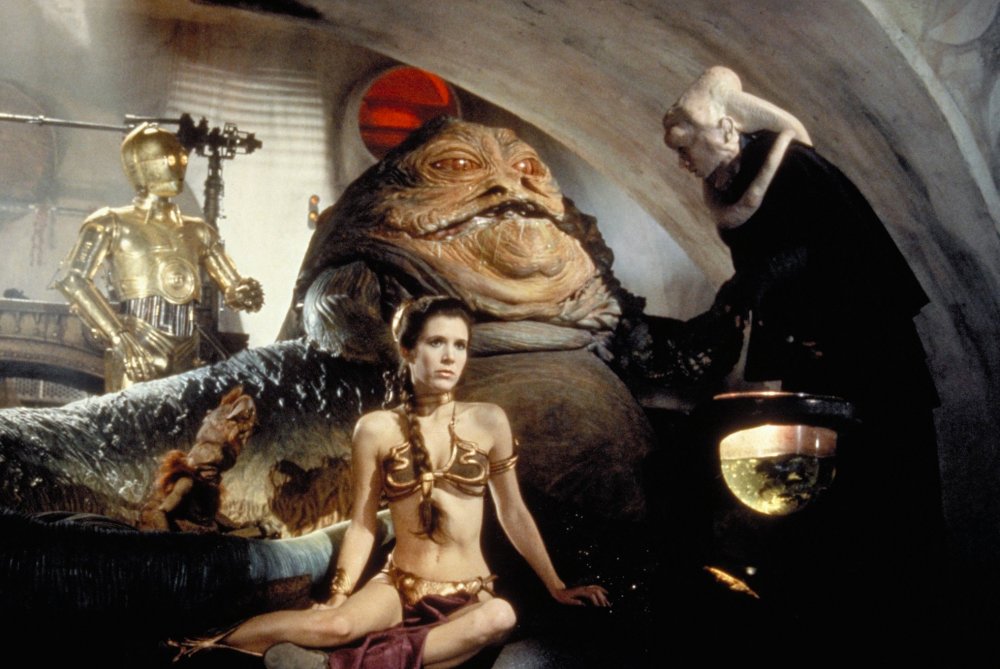
The Death Star has been reconstructed into nothing more startling than Death Star II, leading to another feat of dam-buster flying (the Force is not needed on this trip) down the improbable corridor to the curiously vulnerable vista at its heart. But anticlimax is avoided, not just by brilliant artwork, not just by Luke pursuing more vital matters elsewhere, but by Lucas’s juggling of three battles in one – a trick that Griffith, too, found convenient – so that each contrives to accelerate the pace of the others.
Once threatening us with at least nine episodes of his saga, Lucas offers in Jedi an obvious conclusion to a trilogy, and has stated his interest in retirement. Han and Leia are conveniently paired off – and a nicely understated job has been achieved with the romantic stuff – while Luke has succeeded in despatching his father to the Jedi equivalent of Nirvana, with Viking funeral thrown in.
Setting aside all the masks and monsters, and thinking back to the perspectives of THX 1138 and American Graffiti, the completion of Luke’s hunt for his parent, the struggle to win over (in both senses) his father, seems a tempting point of justification for the whole Star Wars quest. “He was a scrawny little devil,” George Snr. told Time. “He never listened to me. He was hard to understand – always dreaming up things.” George Jnr.’s skywalking fantasy would seem, on this domestic level, to have established his superiority as top Jedi, with all the Force he needs to sit, like Yoda, in placid contemplation of mastered chaos.
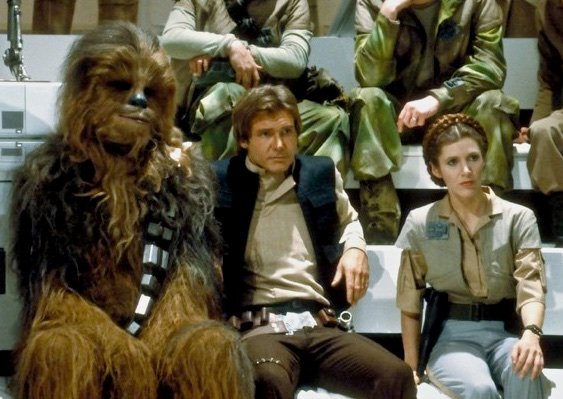
If the revels of Star Wars are indeed now ended, Jedi couldn’t have been a better resolution for them. Self-effacingly directed by Richard Marquand, who wisely makes no attempt to compete with Lucas’s dominating magic, the film sparkles crisply from one peak of action to the next. The acrobatic struggle in mid-air over the lethal creature in its sand pit, with Luke doing a Fairbanks with his light-sabre, Leia in lots of skin busy strangling the villain with a chain, while Han, Chewie and Calrissian almost slide to their doom, has no equivalent in excitement this side of Edgar Rice Burroughs.
The sequence is then smartly outpaced by the vertiginous pursuits through the forest of Endor, and an intermingling of Tron with Hell’s Angels, in which one twitch of the handlebars on the rocket-driven javelin bikes sends us straight into a tree trunk. Having hit a tree himself in his cruising adolescence, Lucas clearly understands the special attraction of this threat, and repeats the technique for the Death Star attack sequence.
The Ewoks (who seem mostly to have been played by Kenny and Eileen Baker) steal much of the thunder in the final battles, and but for their tendency to sound like a chorus from Oklahoma! could replace E.T. and teddies in the world’s nurseries. We shall of course be seeing their like again, as a fresh crop of imitations swarms in the wake of Lucas’s film. But Luke himself now seems destined for a new universe.
Revenge of the Jedi teaser trailer
Return of the Jedi teaser trailer
Return of the Jedi teaser trailer
Return of the Jedi theatrical trailer
-
The 100 Greatest Films of All Time 2012
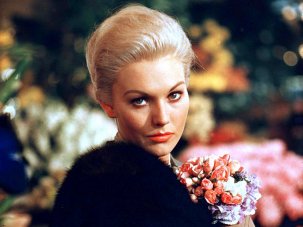
In our biggest ever film critics’ poll, the list of best movies ever made has a new top film, ending the 50-year reign of Citizen Kane.
Wednesday 1 August 2012
-
The Digital Edition and Archive quick link
Log in here to your digital edition and archive subscription, take a look at the packages on offer and buy a subscription.




